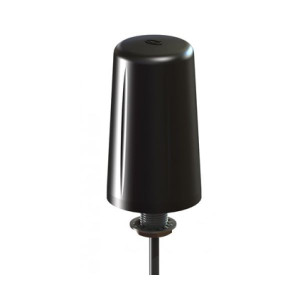Your shopping cart is empty!
MENU

UHF stands for “ultra high frequency.” This means UHF can range from low band (378-512 MHz) to high band (764-870 MHz) frequencies. The hallmark of an ultra-high frequency is its short wavelength, these smaller waves arrive closer together. While they cannot travel as far as longer wavelength frequencies, they can carry more data. UHF Antennas play a major role in today’s connectivity landscape. In fact, you probably use a UHF antenna every day, in some capacity. If you have used a two-way device, such as a cell phone, ham radio, or TV, then you have used a UHF antenna.
In essence, UHF antennas allow users to create two-way communication on a single frequency. This could be between groups, a convoy, or to transmit important information in an emergency situation. Antennas act as the eyes and ears of a radio, picking up UHF signals from surrounding devices and receiving incoming transmissions clearly. The UHF antennas of today look quite different than those during the age of cable TV. Today, most UHF antennas are very low profile and can be mounted in buildings or outdoors without drawing much, if any, attention to them.
UHF antennas are used in a wide range of industries and applications. One of the most common uses of UHF is public safety. Public safety UHF antennas are very short and stout in shape. This is to keep their presence discrete and virtually undetectable to passersby. These antennas can be installed in high-traffic, potentially dangerous, or targeted areas, such as shopping malls, large college or school campuses, and airports. The antenna is there to ensure there is absolutely no lapse in connectivity, reductions in signal strength, or blackouts while in service.
Another use for UHF antennas is TV signals. In TV, UHF antennas are more common than they used to be, as they have more bandwidth to transmit higher-definition programming. If you’re watching your local TV station, you are most likely doing so using a UHF antenna.
Choosing the right antenna is going to depend on a number of factors. Do you need it for stationary or mobile use, which bandwidth? Are there any obvious obstructions, such as trees or buildings, in the way? Once you have determined these factors, finding the right UHF antenna should be simple.
In need of some advice on which UHF antenna is right for your network? Here at Westward Sales, we consider ourselves more than just an electronics distributor. We are experienced networking professionals and engineers with decades of experience in the industry. Our goal is to help you to determine the best strategies and solutions to manage your networks, big or small.
Whether you want to improve remote monitoring, ramp up big data utility, or keep a close eye on valuable assets, we are happy to offer our networking expertise. We want to equip you with the right tools and expertise to solve your technical problems, big and small. We also offer expert insight into network design. Give us a call today for connectivity advice or for more information on our product offerings.